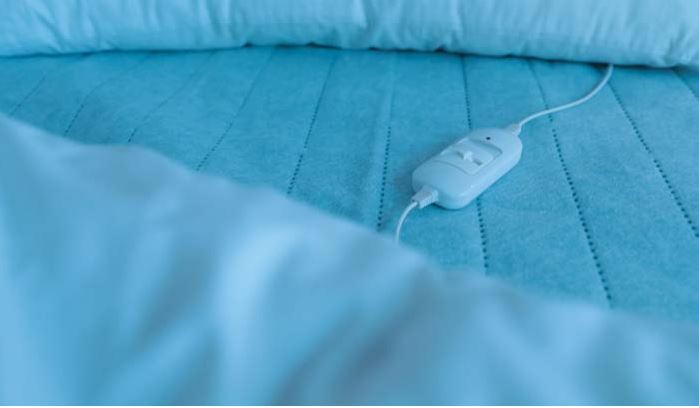A vague analysis of the evolution of the Indian mattress industry gives us the impression that the industry has come a long way and is on a growth spree. Several deliberate initiatives by the organized market players are contributing tremendously towards minimizing the dominance of unorganized players in the mattress industry for the right bed.
According to a Research and Markets report released last year, “the unorganised sector in the Indian mattress market has the upper hand, but the growth rate as compared to the organised sector is very less. In the last five years, the unorganised sector has grown with a CAGR of around 9 percent in terms of value which is way slower than that of the organised sector.” From this, we can decipher that the organised sector has rolled up its sleeves to command a larger share of the mattress market pie.
However, the journey of organized market players in the Indian mattress industry has not been easy. Changing consumer mindset that was largely inclined towards buying cheap mattresses made of cheap and low-standard materials, was the major hurdle. Convincing consumers to buy good quality mattresses was a task and besides that mattress manufacturers were dealing with other business issues including the rising cost of raw materials, dismal sales figures and inadequate support from suppliers.
Over a period of time, with new technology coming in, the manufacturing and suppliers community built a symbiotic relationship to mutually benefit each other. For instance, earlier latex was used as adhesives in mattresses but with rising prices of latex, manufacturers resorted to another cost-effective solution i.e. adhesives that fix up different layers of foam.
Like adhesives, many other raw materials suppliers came forward to support the mattress manufacturers by offering them economical and viable substitutes for other expensive and scarcely available raw materials. This is how the manufacturers and suppliers created an ecosystem to mutually benefit each other.
Mattress makers could offer better products at different price ranges. This attracted many customers and with various sales and marketing campaigns, the organized mattress players are now giving tough competition to their unorganized peers. However, mattress manufacturers are still reeling under the pressure of delivering the right bed for consumers. Each human body is different and every individual has different kinds of health issues. Delivering a wide range of mattresses for different kinds of consumers while maintaining the price advantage is quite a challenge.
Creating an ideal mattress- The biggest challenge for mattress manufacturers!
Which is the ideal mattress for you? This question still does not have a clear one-liner answer. Everyone’s requirement is different and deciding on the right mattress could be cumbersome but once you find the right mattress, the results are worth it. In India, we have single-bed mattresses, double-bed mattresses, queen-size mattresses, king-size mattresses and customized mattresses. But other than knowing about the size and dimensions of each type of mattress, there are other factors that could influence your mattress buying decision. One needs to figure out the user of the mattress, the size of the bedroom, placement of the bedroom, budget, and health conditions of the user, before deciding on an ideal right bed or mattress.
Cutting-edge technologies and advanced materials ensure optimal comfort and support, allowing consumers to wake up refreshed and rejuvenated every morning.
- Non-standardization of different types of bed sizes: The absence of uniform measurements of beds and mattresses, is one of the biggest challenges manufacturers face while creating the right bed. “One significant challenge we have faced is the prevalence of nonstandard right bed sizes in India. This has posed considerable supply chain issues and has often resulted in delays in fulfilling customer orders.
To address this challenge, we have implemented robust systems and processes to streamline our supply chain and ensure timely delivery to our customers, says Rishabh Jindal, Managing Partner at Jindal Petrofoam. In the absence of clearly defined standards for the right bed sizes, it is difficult for mattress makers to come up with consumer-friendly products.
- Lack of awareness of different types of mattress technology among consumers: Consumers are not educated enough to understand about different types of technology used in making various mattresses. This affects their decision with regard to choosing the right mattress or the right bed. “The lack of knowledge or clarity about the various bedding solutions available to a customer is both the challenge as well the opportunity that exists in the Indian mattress market. This lack of knowledge or clarity, in turn, stems from the lack of interest in the product category, which is compounded by the fact that authentic information about sleep products is being lost amongst misleading marketing campaigns resulting in deeprooted mistaken mindsets,” says Dilip Kumar, Director at Springfeel Polyurethane Foams.
- Volatility in Raw Material Prices: The prices of raw materials that go into making mattresses keep fluctuating at regular intervals which impacts the manufacturer’s ability to manage costs. While the established brands are still able to bear the rising costs, it becomes difficult for new players to sustain themselves in the long run.
“In the last 66 years, we have been concentrating on Latex Foam Rubber. Being an agricultural product, the price of latex is very volatile due to various factors but we never compromised on the quality of our mattresses and today the latex we use are GOLS certified Organic Latex,” says Thomas Varghese, General Manager at MM Rubber Company Limited.
Innovation: A need for manufacturers to thrive in the growing mattress industry
Ever since modern beds came into India in the late 50s and early 60s, the industry did not see much innovation until the 1990s when Spring and foam mattresses entered the Indian market. With combined efforts of the then newly established brands like Duroflex, Kurlon, Sheela Foam and Centuary mattresses, the mattress industry started stressing the need for innovation.
With the rise in income levels and growing awareness about sleep for healthy living, mattress makers are increasingly investing their resources to launch products with new and innovative technologies. Consumers are now more focused on the comfort and functionality of the product. This calls for mattress manufacturers to focus more on innovative strategies to improve their products and streamline their operational processes.
“We at Finesse very firmly believe in offering good quality products only and that the price of a product must very truly reflect the quality of materials used in its manufacture. When quality is the principal focus and the product is able to deliver on its promises then the price of the product is justified. However, if the primary focus is the price and quality is given a go by, then the product is more than likely to fail to deliver on its primary intended purpose in the product’s lifetime,” explains Dilip Kumar.
The domestic mattress industry that started with cotton-filled mattresses has witnessed numerous innovations with PU Foam, rubberised coir, spring, gel, latex, innerspring, hybrid, pillow top, polyfoam, and air-to-memory foam varieties.
Today, mattresses are available in all shapes and sizes at different price ranges. However, the fact remains that demand is more for economy categories that come with an affordable price range for most Indian consumers.
Startups like Sleepyhead, WakeFit, Sleepsia, Repose, Flo, and The Sleep Company could be credited for bringing in innovation both in terms of product development and innovative marketing strategies.
These startups adopted the omni-channel route to establish a pan-India presence which was earlier not possible for mattress companies that had dominance limited to regions closer to their manufacturing facilities. Now, due to easy customer acquisition, buy and return policies, and quick delivery, established brands are also taking the omnichannel route to expand their presence across India.
A lot of innovative marketing strategies have also contributed towards increasing customer acquisition. Now sleep products manufacturers are selling the idea of sleep to their customers. Earlier, the focus was on the product but now the focus is on the idea of sleep and its benefits.
The growth of the online mattress market has also opened room for innovation. The advantages offered by the online mattress segment, in terms of, immediate return, discount offers and cash on delivery, are that consumers are now preferring online retailing. E-commerce platforms like Pepperfry, Urban Ladder and the websites of various mattress brands are appealing to the growing young population and hence, it is expected that the online mattress market is likely to witness more demand.

Suppliers’ contribution towards innovation
We see mattress as a final product but there are numerous components used in the mattresses that makes the mattress user-friendly. With more variety of mattresses available for consumers these days, suppliers too have an important contribution towards the growth of the mattress industry. To make a good quality final product, the components also have to be of superior quality. For instance, there are different substrates of foams that are being used in a mattress and to fix all these substrates we need adhesives.
To add to the comfort of the mattresses, manufacturers also use various animal hair and to cover the entire set of raw material, a tough quality sheet is also required. Overall packaging of a mattress product requires various other raw materials.

In order to make the final mattress product conducive to consumers’ usage, suppliers also must focus on delivering high-quality raw materials to mattress manufacturers.
Once the final product is manufactured, the mattress suppliers and dealers take over the charge of helping consumers select the right mattress for them. The active involvement of suppliers is becoming quintessential as they have the responsibility of selling the idea of sleep by educating their consumers. The entire lifecycle of a mattress or sleep product right from its production to sale is quite challenging.
The players in the organized segments should streamline the supply chain for both good quality raw materials and delivery of finished products to ensure minimal risks.
With features like adjustable firmness, smart sensors, and personalized sleep tracking, manufacturers are trying to empower consumers to customize and optimize their sleep for the ultimate comfort
As pointed out by Jindal, “The volatile nature of raw material costs used in foam production has posed a continuous challenge for maintaining price stability and ensuring a consistent supply chain. To mitigate these challenges, we have established strategic partnerships with suppliers, implemented effective cost management strategies, and closely monitored market trends to adapt our pricing and supply chain processes accordingly.
Mattress manufacturers believe that innovation is the key to unlocking the perfect sleep experience. By leveraging the latest advancements in sleep science and technology, manufacturers create right bed that adapt to body structure, regulate temperature, and provide customizable firmness levels along with the right bed
Road ahead for manufacturers and suppliers
While the Indian mattress industry has come a long way since the 1960s, however, it still has tremendous scope to grow further. The mattress industry still must fix many loopholes to reach its desired position.
There are many challenges that mattress manufacturers and suppliers must deal with, namely, lack of awareness, immature franchise models and non-standardization of mattresses. There is quite some headroom for new players to flourish in this industry by expanding their reach to tier 2 and tier 3 regions.
Factors like increasing population, rising urbanisation, and increase in disposable income will drive growth in the mattress industry. Hence, manufacturers and suppliers should be ready to cater to the demand for the right bed. Increasing demand from end-user industries like real estate, hospitality and healthcare will also give sleepless nights to manufacturers and suppliers.
There is an essential requirement to address various factors impacting the growth of the industry, namely, price, reach, target group, distribution channels, technology, after-sales service, marketing, research and development (R&D) and replacement span. A well-coordinated approach will help the mattress industry to innovate further and make the industry capable enough to deal with global players.


